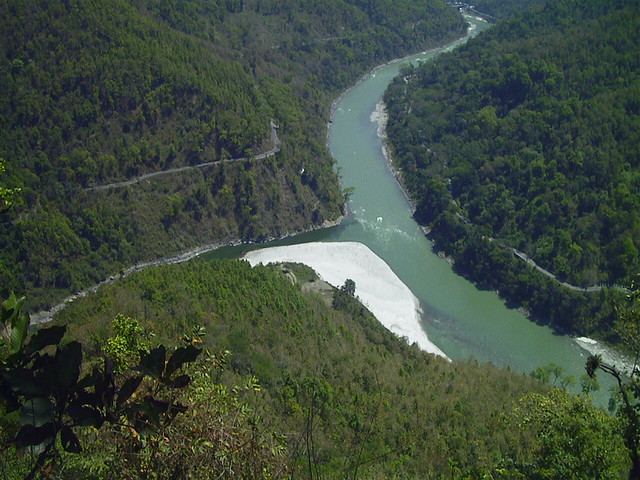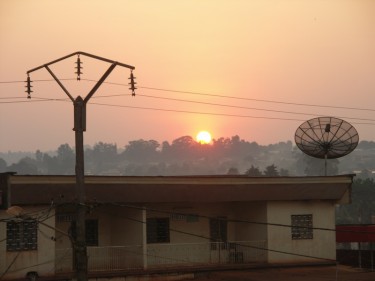
Le Nshima, cette pâte compacte ayant l’aspect du porridge et faite à partir de farine de maïs, a parfois divisé les familles et provoqué des émeutes en Zambie. C’est pourquoi les gouvernements zambiens successifs ont gardé un oeil attentif sur la culture, la récolte, l’achat et la vente de farine de maïs aux consommateurs.
La production de maïs est une question encore plus importante dans la région minière de Copperbelt (ceinture du cuivre) et dans les régions métropolitaines comme la capitale, Lusaka, où des populations ouvrières en grand nombre dépendent de l’approvisionnement de ce produit dans les commerces. Ainsi, le maïs détermine la direction politique de la nation.
En mai, la Banque Mondiale a exhorté le gouvernement zambien à éviter d’interférer dans la détermination du prix plancher du maïs vendu par les agriculteurs à l’Agence de Réserve Alimentaire et aux autres parties impliquées dans la chaîne agroalimentaire. Malgré ces injonctions, le Ministère de l’Agriculture a annoncé le prix plancher du maïs : 65 000 K (environ 13 $US) par sac de 50 kg pour cette année.
Le directeur régional de la Banque Mondiale pour la Zambie, le Malawi et le Zimbabwe, Kundhavi Kadiresan, a critiqué cette décision et affirmé que les petits agriculteurs zambiens se faisaient exploiter par des spéculateurs qui achètent leur maïs en espérant le revendre à l’Agence de Réserve Alimentaire du gouvernement à un prix plus élevé. Kundhavi Kadiseran a aussi signalé la profonde inquétude de la Banque Mondiale non seulement devant l’incapacité des politiques gouvernementales à assurer le développement à long terme du secteur agricole mais aussi devant le peu d’efforts consentis en vue de la création d’emplois et de la réduction de la pauvreté.
On peut comprendre Kadiseran. Outre les autres cultures et l’élevage, l’agriculture zambienne est basée sur le maïs. La majeure partie du maïs est cultivée par des paysans qui subissent régulièrement la sécheresse pendant ce qui devrait être la saison des pluies, souffrent d’un approvisionnement en engrais peu fiable et coûteux et rencontrent des difficultés à transporter leurs produits vers les marchés.
En 1986, les Zambiens de la Copperbelt et de Lusaka s’étaient soulevés contre une hausse démesurée du prix du maïs alors que leurs revenus étaient restés constants. Quatre ans plus tard, des émeutes liées à la hausse des prix avaient même engendré une tentative de coup d’Etat.
Après avoir annoncé le nouveau prix plancher du maïs, le Ministre de l’Agriculture et de l’Elevage, Emmanuel Chenda, a déclaré :
Nous avons pris cette décision afin de protéger la sécurité alimentaire au niveau national et aussi pour s’assurer que les petits exploitants ne se détournent pas de cette culture dans les années à venir…Pour assurer la compétitivité du maïs zambien sur les marchés internationaux, le gouvernement va participer à la réduction des coûts de production grâce, entre autres stratégies, à la dispense de formations d’extension agricole et l’octroi de moyens de transport pour les travailleurs en vue d’augmenter la productivité des petits exploitants.
Chenda a aussi dévoilé des programmes gouvernementaux de construction d’infrastructures de stockage supplémentaires, une mesure au long cours destinée à éviter le gaspillage. Cela sera supervisé par l’Agence de Réserve Alimentaire (FRA, acronyme anglais). Quelques jours avant la déclaration du ministre, la FRA avait détruit une énorme quantité de maïs avarié stocké dans diverses régions à travers le pays. Chenda s’est exprimé à ce sujet :
Je souhaite informer la nation que la plupart des pertes de la FRA dont nous avons été témoins sont dues aux infrastructures de stockage insuffisantes et inadéquates…Afin de surmonter ce problème, le gouvernement a commencé à mettre en place des programmes de construction d’infrastructures de stockage supplémentaires. Cette mesure va s’incrire dans la durée.
(Translation by Marie-Laure Le Guen)
For further information on the topic, please view the following publications from our partners:
Agricultural Development in a Changing Climate in Zambia: Increasing Resilience to Climate Change and Economic Shocks in Crop Production, from the German Development Institute, Bonn, Germany.
Food Price Transmission: Rising International Cereals Prices and Domestic Markets, from the Overseas Development Institute (ODI), London, United Kingdom.
How do Food Prices Affect Producers and Consumers in Developing Countries, from the International Centre for Trade and Sustainable Development (ICTSD), Châtelaine (Geneva), Switzerland.
For more information on issues and events that shape our world please visit the ISN’s Security Watch and Editorial Plan.




